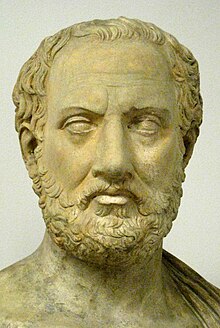
Back طريقة تاريخية Arabic Исторически метод Bulgarian پێڕەوی مێژوویی CKB Historická metoda Czech Historisk metode Danish Metodologio de historio Esperanto Método histórico Spanish روش تاریخی Persian Méthodologie historique French ऐतिहासिक विधि Hindi

| Part of a series on |
| Research |
|---|
 |
| Philosophy portal |
Historical method is the collection of techniques and guidelines that historians use to research and write histories of the past. Secondary sources, primary sources and material evidence such as that derived from archaeology may all be drawn on, and the historian's skill lies in identifying these sources, evaluating their relative authority, and combining their testimony appropriately in order to construct an accurate and reliable picture of past events and environments.
In the philosophy of history, the question of the nature, and the possibility, of a sound historical method is raised within the sub-field of epistemology. The study of historical method and of different ways of writing history is known as historiography.
Though historians agree in very general and basic principles, in practice "specific canons of historical proof are neither widely observed nor generally agreed upon" among professional historians.[1] Some scholars of history have observed that there are no particular standards for historical fields such as religion, art, science, democracy, and social justice as these are by their nature 'essentially contested' fields, such that they require diverse tools particular to each field beforehand in order to interpret topics from those fields.[2]
- ^ Fischer, David Hackett (1970). Historians' Fallacies: Toward a Logic of Historical Thought. New York: Harper Perennial. p. 62. ISBN 9780061315459.
Historians are likely to agree in principle, but not in practice. Specific canons of historical proof are neither widely observed nor generally agreed upon.
- ^ McCullagh, C. Behan (2000). "Bias in Historical Description, Interpretation, and Explanation". History and Theory. 39 (1): 47. doi:10.1111/0018-2656.00112. ISSN 0018-2656. JSTOR 2677997.
W. B. Gallie argued that some concepts in history are "essentially contested," namely "religion," "art," "science," "democracy," and "social justice." These are concepts for which "there is no one use of any of them which can be set up as its generally accepted and therefore correct or standard use. When historians write the history of these subjects, they must choose an interpretation of the subject to guide them. For instance, in deciding what Art is, historians can choose between "configurationist theories, theories of aesthetic contemplation and response .. ., theories of art as expression, theories emphasizing traditional artistic aims and standards, and communication theories.